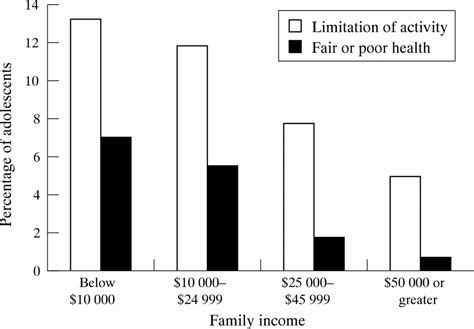Social class exerts a profound influence on our lives, shaping our health, wealth, and overall well-being. However, the true extent of this impact is often overlooked or underestimated. This article delves into the staggering disparities that exist between different socioeconomic strata and calls for urgent action to address this critical issue.

Unveiling the Health Disparities
Studies have consistently shown that individuals from lower socioeconomic backgrounds experience a plethora of adverse health outcomes compared to their more affluent counterparts. These disparities are evident across various health indicators, including:
- Chronic Diseases: People living in poverty are more likely to develop chronic conditions such as heart disease, stroke, diabetes, and cancer.
- Mental Health: Individuals from lower socioeconomic groups have higher rates of mental illness, such as depression and anxiety.
- Life Expectancy: The life expectancy gap between the richest and poorest Americans has widened to over 15 years.
Understanding the Social Determinants of Health
The root causes of these health disparities lie in the social determinants of health, which are the social and environmental factors that shape our health outcomes. These include:
- Income and Wealth: Low income and wealth limit access to quality healthcare, healthy food, and safe housing.
- Education: Low educational attainment is associated with lower health literacy, poorer health behaviors, and reduced access to healthcare.
- Occupation: Manual labor and other low-paying jobs often involve hazardous working conditions and exposure to harmful substances.
- Housing: Inadequate housing can lead to overcrowding, poor ventilation, and exposure to environmental toxins.
Exploring Motivations for Change
Addressing social class disparities requires understanding the motivations that drive health-related behaviors. These include:
- Financial Constraints: Low-income individuals may prioritize paying for basic necessities over healthcare expenses.
- Lack of Knowledge: Limited health literacy can make it difficult to understand health information and navigate the healthcare system.
- Cultural Barriers: Cultural norms or beliefs may influence health behaviors and access to healthcare.
- Time Restrictions: Long working hours or multiple jobs can limit time for health-promoting activities.
Implementing Effective Strategies
Tackling social class disparities in health requires a multi-faceted approach involving government policies, community programs, and individual actions. Effective strategies include:
- Expanding Access to Healthcare: Increasing health insurance coverage, enhancing community health centers, and promoting telemedicine can improve access to care for underserved populations.
- Improving Education and Employment Opportunities: Investing in early childhood education, job training programs, and affordable housing creates pathways for socioeconomic mobility.
- Address Social Inequality: Reducing income inequality, establishing a living wage, and providing tax credits for low-income families can improve overall well-being and health outcomes.
- Promoting Health Literacy: Implementing health education programs, providing language assistance, and simplifying health information can empower individuals to make informed health decisions.
Tips and Tricks
In addition to broad strategies, there are practical tips that individuals can adopt to mitigate the impact of social class on their health:
- Prioritize Health: Make time for regular check-ups, screenings, and exercise, regardless of financial constraints.
- Seek Support: Reach out to community health centers, social service organizations, or family and friends for support and assistance.
- Stay Informed: Stay updated on health information and resources through trusted sources like public health agencies or reputable websites.
- Advocate for Change: Participate in community organizations or support groups to advocate for policies that improve health equity.
Conclusion
Social class disparities in health are a grim reality that undermine the well-being of our society. By understanding the underlying causes, motivations, and effective strategies, we can collectively work towards a more just and equitable world where everyone has an equal opportunity to live a healthy and fulfilling life. The time for action is now, and we must never waver in our efforts to bridge the health gap that divides our society.
